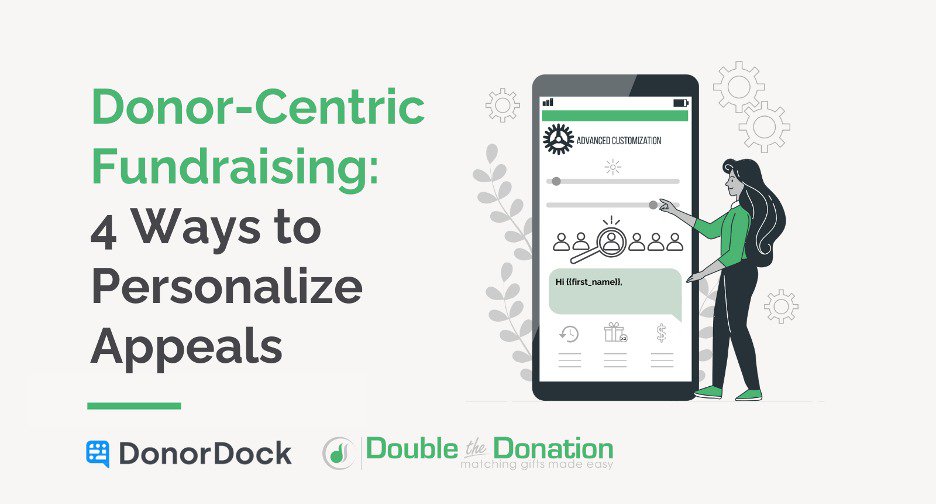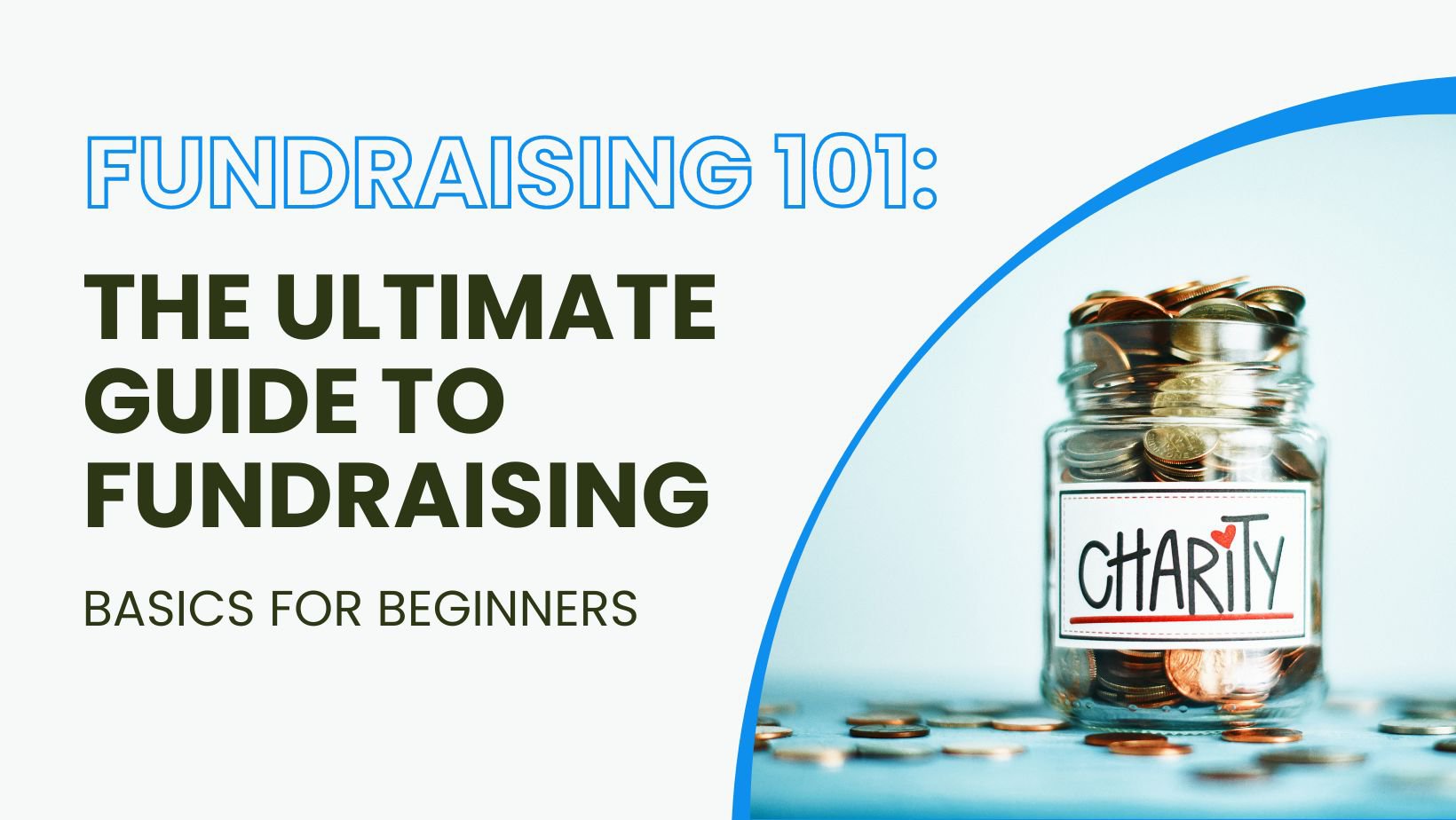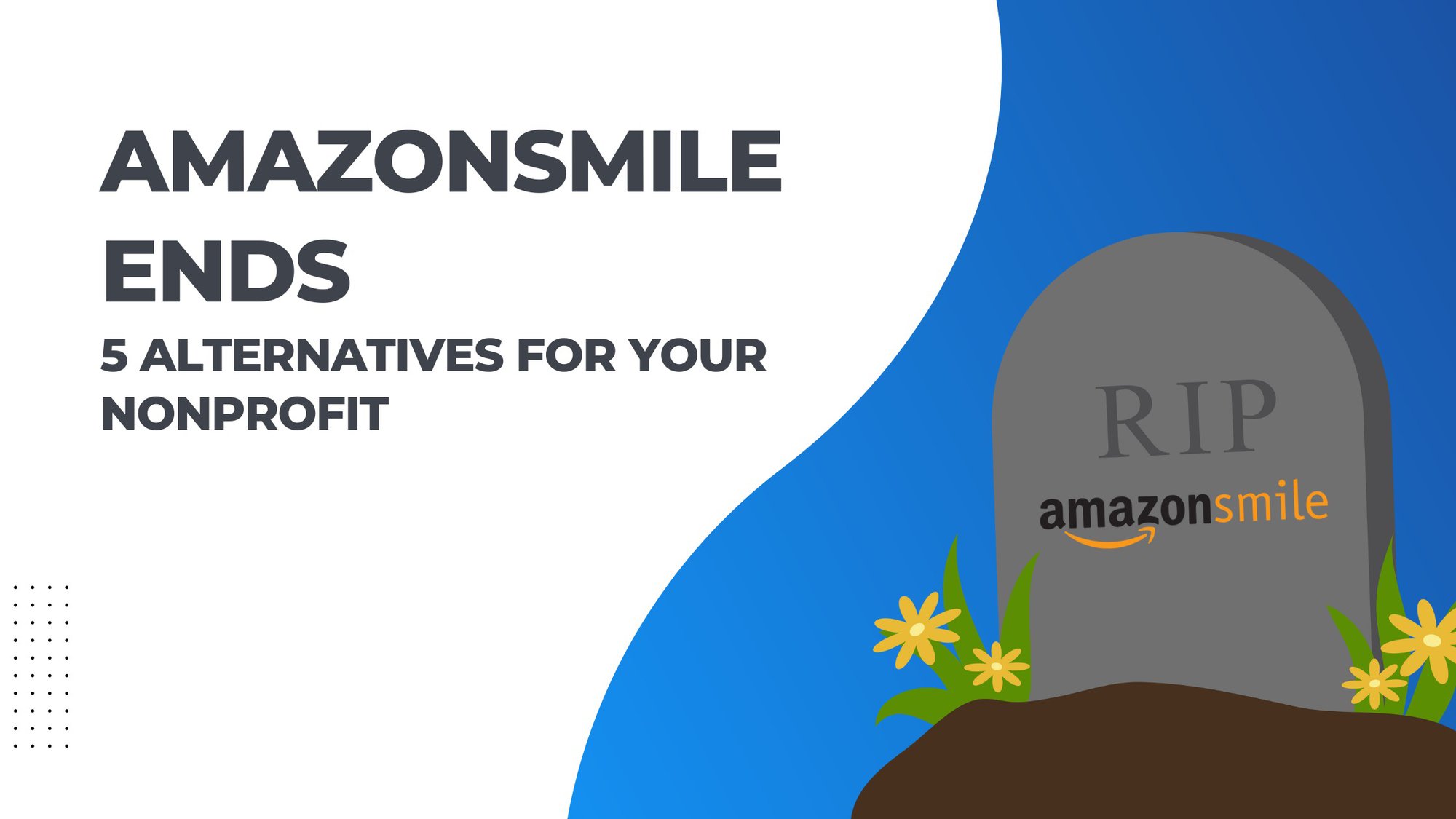Have you ever tried to navigate a maze at night? Stumbling along in the dark, you feel lost and confused. While that feeling adds to the fun of a maze, it’s much less exciting while trying to navigate a nonprofit’s website. If you're nonprofit’s website lacks clear direction, then your donors are likely trying to find their way in the dark. But what are website best practices that your nonprofit should be following?

Table of Contents
- Why your website matters
- Define your donor journey
- Best practices for your nonprofit website
- Prioritize your homepage
- Best practices for driving traffic to your nonprofit website
- Implement website best practices with limited resources
- FAQs
- Conclusion
Simply having an online presence isn’t enough - your nonprofit website needs to do more than just exist. Your visitors need to clearly see what drives your organization. They need to know where to go next to learn more about your nonprofit, donate, or get involved.
You might be thinking "We're doing our best." And we get it - you wear a lot of hats, and as a nonprofit leader, you probably never thought web designer would be one of them!
So, instead of your nonprofit’s mission being lost amidst overwhelming information and poor web design choices. Let’s illuminate the path of your donors and check out these best practices to take your nonprofit website to the next level!
Why your website matters
Your nonprofit's website is the heart of your online presence. This is where potential donors, volunteers, and those interested in your cause learn more about your organization.
Your website is often one of the first run-ins potential donors will have with your nonprofit. It’s important to follow website best practices, so your nonprofit can make the best first impression.
A good nonprofit website does more than just inform—it inspires action.
A good nonprofit website does more than just inform—it inspires action, too! A website that your donors trust is more likely to secure donations and connect your audience to the heart of your mission.
How do you make sure your nonprofit website does all that you need it to?
First, define your donor journey
Do you know what you want people to do when they visit your website? You can’t lead them through the maze if you haven’t figured out where it ends. Until you decide where they should end up, your nonprofit website won’t lead to the results you’re hoping for.
Take a minute to brainstorm your ideal donor journey. Think about the specific actions you want visitors to take and how you can direct them to those actions. By defining the ideal next steps, you will be able to decide what messaging and what calls to action (CTAs) you should include on your website.
Key Takeaway:
You can’t lead your donors through the maze if you haven’t figured out where it ends. Define your donor journey, so you inspire your donors to take the right actions!
Best practices for your nonprofit website
When it comes to the success of your nonprofit, one factor that cannot be overlooked is maintaining a consistent brand across your website. An outdated or inconsistent website can give potential donors the wrong impression about your nonprofit. It's important to make sure that every aspect of your site—from its visuals to its tone and structure—reflects the quality and credibility of your work.
A great example is the Albuquerque Youth Symphony Program. They use great images, with consistency across all of their pages. Their tone is consistent, and the navigational bar stays the same across all pages.

Maintain nonprofit brand consistency
A consistent website not only improves user experience but also builds trust with visitors. When users know what to expect on each page, they’re more likely to engage with content and less likely to leave due to confusion or frustration.
Elements to stay consistent on:
- Tone: The voice used in all written content should reflect the mission and values of your organization.
- Visual Style: This includes color schemes, fonts, images, and logos—all should be harmonious throughout all pages.
- Navigational Structure: Your site’s navigation system must be straightforward and user-friendly regardless of your visitor’s tech-savviness level.
Maintaining a consistent brand on your website is not just about aesthetics—it's about building trust with potential donors and making sure they have an engaging user experience.
Simplify complex messaging
A nonprofit's mission might be complex but its message shouldn't be. Remember, clear communication equals more donor engagement. For instance, make sure 'Donate' buttons are easy to spot if fundraising is crucial.
Your website design should highlight key messages clearly - think elevator pitch style. Fine-tune your website copy, so that it doesn’t overwhelm readers. And choose those stories or the messaging that will connect deeply with visitors.
“What we found is that it's very easy to just create a website, but for it to actually be reflective of the organization, their community, you need to make sure that you really get at the heart of what the organization is about and what they're trying to accomplish.”
-Austin Hattox, Pixel Lighthouse, on Beyond the Donation episode 16
Use clear calls-to-action
Clear calls-to-action (CTAs) serve as signposts guiding website visitors toward what steps they should take next – whether it’s donating, volunteering, or subscribing for updates.

In ConversionXL’s study, sites with explicit CTAs increased conversion rates by 17%. So make sure each page has at least one CTA encouraging users towards meaningful engagement with your mission.
Your 'Donate Now' button could become 'Support Our Cause Today', or include impact-related phrases like 'Provide a Meal Now' or 'Fund a Scholarship Today'. These emotionally engaging CTAs prompt immediate action from your website visitors.
Remember, the most effective CTAs are those that resonate with your audience and align with your mission. Use them wisely to help guide users towards actions that benefit both parties – helping you achieve more of what matters while also giving them an opportunity to contribute positively.
Key Takeaway:
Use simple clear messaging and emotionally engaging CTAs.
Prioritize your homepage
The homepage is the digital face of your organization. It needs to captivate site visitors instantly and make them want to learn more about you. If you only have the time or budget to give to one part of your website, let it be your homepage. You can even embed your online giving donation form directly onto your homepage, so users don’t have to look anywhere else!
Best practices for your nonprofit website homepage
Make a strong first impression
How can you make your site easy to navigate while still packing a punch with impactful content? Start by showcasing some of your most compelling visuals - perhaps you have beautiful photos from an event, a video about your mission, or images that show the real-life issue your nonprofit is solving.

The Water 4 Life Global website, for instance, uses high-quality imagery combined with minimal text and white space to convey its message instantly upon opening its homepage – creating both an emotional connection and a strong first impression within seconds.
Create a good user experience
To keep site visitors hooked beyond those initial few moments requires thought-out user-experience strategies aimed at making your website user-friendly.
- Simplicity is key: A cluttered page can overwhelm users quickly; maintaining simplicity makes navigation easier.
- Ease accessibility: Prioritize intuitive layouts that cater not just to desktops but also to mobile devices which now account for over half of web traffic.
- Avoid jargon overload: We're passionate about our causes; however, let's remember to speak in a language that everyone understands.
- Use strategic CTAs: These calls to action should be clear, direct, and prominent.
Key Takeaway:
Boost engagement on your nonprofit website with the best practices of beautiful visuals and compelling copy. Keep your page simple with clear CTAs.
Best practices for driving traffic to your nonprofit website
What is SEO?
In the digital world, Search Engine Optimization (SEO) is an important part of driving traffic to your website. But what exactly is SEO? And why should it matter for nonprofit organizations?
SEO refers to a set of strategies used to optimize websites for search engines like Google, Bing, or Yahoo. The primary aim is to rank higher on search engine results pages (SERPs), thereby attracting more visitors organically - that's without paying for ads.
This process involves various techniques such as keyword optimization, creating high-quality content relevant to your audience's interests and needs, and improving site speed and mobile-friendliness among others.

Yeah, that’s a lot, isn't it?! SEO feels intimidating in the beginning. There is a lot of jargon that can be hard to follow if you haven’t heard it before. There are plenty of great resources out there to help you get started! Here you can learn more about these techniques.

The Importance of SEO For Nonprofits
You might wonder: "We're not selling anything; why do we need SEO?" Well, while nonprofits aren't profit-driven entities like businesses are – they still have goals that necessitate online visibility.
- Raising Awareness: A well-optimized website helps you get in front of to people who may be interested in supporting your cause but don't know about you yet.
- Soliciting Donations: When individuals lookup phrases related to donating – say 'donate for child education', if your organization deals with this issue and has optimized its website using relevant keywords then there’s a good chance it will show up in the SERPs leading them directly towards making a donation.
- Gaining Volunteers: Similarly, if someone is looking to volunteer in a particular field related to your nonprofit’s mission, SEO can help them find you more easily.
In essence, SEO helps nonprofits increase their digital footprint and achieve their goals more effectively. It's an investment that pays off by increasing your visibility online and bringing you closer to potential donors and volunteers.
The power of social media for discoverability
Social media boosts visibility by directing traffic back to websites. Hootsuite explains how social media helps nonprofits. Did you know social platforms drive 31% of all referral traffic to websites? It’s important to have an active social media. And, including social media icons on your website, so that your content can be easily shared is also a key component to increasing web traffic. Make sure the option to share on social media is visible and easy to do so that readers share content from your blogs or other resources directly onto their social media.
Did you know social platforms drive 31% of all referral traffic to websites?
This increases your nonprofit’s visibility, as people might encounter it via posts shared by friends or family members.
An active blog is a nonprofit website best practice
Blog posts are another important tool for growing your nonprofit’s visibility. Regularly updated content not only helps keep your audience engaged but also improves SEO. When search engines see fresh content, they know you're actively maintaining your site, which boosts rankings and brings in more potential donors.
But, you might be thinking, “When would I possibly have time to write a blog?” An easy place to start is by sharing stories from the nurture emails you’ve already been sending out to your donors. If you send out a monthly newsletter, pull inspirational stories, impact statements, or helpful statistics from those newsletters and share them on your website as well.
Implementing website best practices with the limited resources your nonprofit has

Nonprofits often face tight budgets and even tighter time constraints. You’ve got a million things on your plate at any point in time, so prioritizing your nonprofit web design may feel out of reach.
Companies like Pixel Lighthouse specialize in helping nonprofits with their branding and nonprofit websites. They offer helpful guides and articles, so your nonprofit can craft a compelling website. They also offer consultations, so that your nonprofit can move forward with redesigning your own website, or you can hire their team to do the work for you.
Streamlining web design with AI
Creating an effective nonprofit website that is both engaging and user-friendly can be a complex process. But guess what? Artificial Intelligence has got your back. There are now AI-powered web design tools, like Wix ADI or Bookmark's AIDA, that help in building beautiful websites by automating the selection of color schemes, font styles, and layout organization based on your preferences.
Besides giving your site an aesthetic boost to captivate site visitors right off the bat; they also ensure responsive designs compatible across mobile devices - something Google loves.
Automated content creation

Wouldn't it be great if you could clone yourself? Well while science isn’t quite there yet (and let’s face it, it might lead to some pretty freaky outcomes), AI technology serves as excellent understudies.
Everyone is talking about ChatGPT these days. It is a useful tool that can help you overcome writer’s block and help you get a solid start on any content that you want to produce.
But did you know that DonorDock also uses AI to help nonprofits like yours create compelling online giving and email content? The Donor Development platform uses smart text to help you come up with headers and titles, explain your mission, create email campaigns, and even help with crafting a clear CTA.
Crazy but true fact: Did you know that up to 20% of all business content will be authored by machines this year? Pretty mind-blowing, right?
Key Takeaway:
Embrace the power of AI tools for your nonprofit website. They not only streamline web design, making it more appealing and mobile-friendly, but also automate content creation to keep your audience engaged without stretching thin resources. And let's not forget their role in mastering SEO - offering actionable insights that improve visibility and boost rankings.
FAQs about nonprofit website best practices
What makes a good website for a nonprofit?
A top-notch nonprofit site is user-friendly, clearly states the mission, and encourages donations with clear calls-to-action. It should also offer engaging content to keep visitors interested.
What should a nonprofit website look like?
A well-designed nonprofit site looks clean and professional, showcasing compelling visuals related to their cause. The donation button needs to be prominent and the mission statement visible on every page.
How do I set up a nonprofit website?
To create your own nonprofit site, start by choosing an intuitive website provider like Webflow or Wix. Craft concise web copy that tells your story and install online donation capabilities. Optimize for mobile use as well.
Is Wix good for nonprofits?
Yes, Wix works well for nonprofits because it offers budget-friendly plans alongside easy-to-use design tools that let you build attractive websites without needing coding knowledge.
Conclusion
Your nonprofit website is the heart of your online presence. Prioritize making a strong first impression with an optimized homepage, and keep user experience at the forefront!
Aim to drive desired actions through effective web design - think easy online donations and clear calls-to-action. Yes, these are nonprofit website best practices.
Finally, don't shy away from AI tools for ideation and content creation - they're game changers!
Nurture your donor relationships with DonorDock. An easy-to-use Donor Management Platform built for nonprofits like yours.
To hear more from Austin at Pixel Lighthouse, listen to his interview on Beyond the Donation














